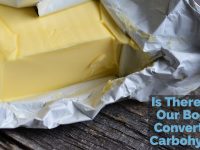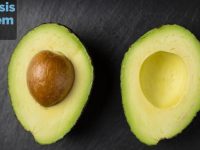The term “climbing” encompasses a diverse array of sports. Just as “running” includes everything in the spectrum from 100 meter sprints to 100+ kilometer ultramarathons, “climbing” could mean bouldering, sport climbing, big wall ascents, or mountaineering (with other disciplines like ice climbing in the mix, too).
Despite many similarities, each discipline differs in important ways. Not only do they favor different athletic strengths (boulderers need more power, big wall climbers need more endurance, etc.), they also have differ in the challenges and limitations they present. As a result, each discipline has unique dietary needs—at least for those who are interested in maximizing performance!
In this article, we’ll examine from a bird’s eye vantage how the needs of the sport shape the ideal diet. We will not dive deeply into specific nutrition needs—an entire article could be written for each sport—but rather explore how nutritional needs change as a climber moves from discipline to discipline.
Dietary Needs for Bouldering
Of all the climbing disciplines, boulderers have the most dietary leniency. It’s not that they can eat whatever they want and perform equally well—that is untrue for any sport—but whereas other climbing disciplines rely more heavily on the aerobic and anaerobic lactate systems, boulderering is powered first and foremost by the creatine phosphate system. Additionally, boulderers get a lot of time to rest compared to other climbers, which means the small aerobic edge carbohydrates have over fat in terms of regenerating creatine isn’t vital to performance.
That being said, carbohydrates are still the preferred fuel for boulderers because they power the anaerobic lactate system, the only other anaerobic system a boulderer can fall back on when their creatine phosphate is spent. Also, fats offer no ergogenic advantage compared to carbohydrates, so carbohydrate needs should be assessed and met first while fat simply takes in whatever slack is left.
Since boulderers typically need fewer calories than longer route climbers (because they spend comparatively more time resting to fully regenerate creatine phosphate), protein will make up a greater percentage of the diet—but this is only because protein needs are static. Boulderers still have no use for protein in excess of roughly 120 grams per day.
The ideal boulderer’s diet should be somewhere in the range of 15-30% protein, 45-65% carbohydrates, and 15-30% fat. Note, however, that boulderers who have restricted rest periods—like competitors in bouldering comps—will do better with carbohydrates near the upper end of the spectrum (and fat near the lower end) to ensure rapid recovery in limited time.
Dietary Needs for Sport Climbing
It’s tempting to think of sport climbing as an endurance event—and certainly sport climbers are on the wall for far longer than boulderers—but it’s still very much an anaerobic sport. The only type of endurance needed for sport climbing is power endurance, or the ability to maintain anaerobic power for an extended period of time, and the creatine phosphate system remains the single most important energy system.
Unlike boulderers, however, sport climbers are limited by the rests a route provides, and that amplifies the importance of having rapid aerobic energy turnover. Now the small aerobic edge carbohydrates have over fat is vital, and sport climbers therefore have a greater need for carbohydrates than boulderers.
By virtue of simply being on the wall longer, sport climbers also typically burn more calories than boulderers. To gain and maintain strength, they need to eat more calories total—and since carbohydrates should take up most of that slack, the relative importance of protein and fats goes down.
Keep in mind that we’re talking about relatives, though—in absolute terms, protein intake should remain the same (120 grams/day) and fat intake should actually increase. It’s only because the majority of the extra calories are coming from carbohydrates that we see relative decreases in protein and fat.
In total, the ideal sport climber diet is 55-75% carbohydrate, 10-20% protein, and 15-25% fat. Sport climbers who train more intensely should be on the upper end of the carbohydrate spectrum and the lower end of the protein and fat spectrums, but otherwise can opt for greater or lesser intake according to preference.
Dietary Needs for Big Wall Climbing
Big wall climbing introduces two challenges unknown to shorter route climbers: an emphasis on great aerobic endurance, and the need to carry all their food up the wall. These challenges can dramatically affect a big wall climber’s diet.
In regard to the first challenge, not only is big wall climbing more aerobic by nature, it’s also more energy-demanding—big wall climbers spend significantly more time climbing over the course of a day than even the most dedicated sport climber, and as such have significantly increased caloric needs. These extra calories should come from both carbohydrates and fats to ensure energy intake is adequate, as carbohydrate-rich foods can be filling in large quantities.
As far as hauling food up the wall goes, it’s somewhat of a wash as to the relative advantages of carb-rich and fat-rich foods. High-carbohydrate foods tend to contain more water and provide an important secondary source of moisture; high-fat foods are energy dense and weigh less for the calories they pack. It’s difficult to unequivocally state that the weight saved with high-fat foods is beneficial since such foods may necessitate carrying additional water, which will easily offset any weight saved.
Regardless, carbohydrates retain the aerobic edge over fats, and for this reason alone a big wall climber will perform better on a higher-carb diet, even than a sport climber. Despite the endurant nature of big wall climbing, the small muscles of the forearms are easily deprived of oxygen, and across the course of a day carbohydrates will better regenerate (and re-regenerate again and again) the extremely limited supplies of creatine phosphate.
Since big wall climbers need more carbohydrates and fats to meet their increased caloric needs, the relative contributions of each are similar to those of sport climbers, but absolute amounts do increase. Similarly, the relative contribution of protein will go down since protein needs are static.
Overall, the diet a big wall climber hauls up should be 60-75% carbohydrates, 5-15% protein, and 15-25% fat. Personal preference can dictate whether you fall on the higher or lower end of the spectrum, but if you’re trying to break a record, you should err on the side of more carbs and less fat.
Dietary Needs for Mountaineering
Mountaineers face all the same challenges as big wall climbers, but also the difficulties of a high-altitude environment. Specifically, climbers at high altitude can expect to have a greater base caloric need and significantly less appetite. The combination of these factors is often a recipe for weight loss and debilitating fatigue, so mountaineers must be careful about maintaining a caloric intake relative to the rigors of their environment lest they fail to complete the climb.
Some experts have suggested that carbohydrates are more energy-effecient than fats during mountaineering expeditions since oxygen is at a premium (carbohydrates yield more energy per unit of oxygen than fats), but most studies indicate that this is not actually the case. Rather, just like at sea level, the intensity of exertion of availability of fuel determine to what extent carbs and fats are burned—so there is no inherent advantage to carbs.
More importantly, many mountaineers find it challenging to eat enough carb-rich food in a high-altitude environment due to the great degree of appetite suppression. Fats have over double the energy per gram than carbohydrates, so eating lots of fat-rich foods may allow for more sufficient energy intake. In fact, many mountaineers unknowingly self-select for greater fat intake during their climbs.
Ultimately, it comes down to personal preference—you should bring whatever foods you will be motivated to eat in large amounts because simply eating enough is of far greater importance than any relative advantage of carbs or fats. This includes protein, though protein is a far less capable energy source than fats or carbohydrates. A high-protein diet will, however, prevent muscle loss in the event of inadequate caloric intake and possibly ward off mental fatigue, so it is helpful in greater amounts than with any other climbing discipline.
Given the high potential for individual variability, a mountaineer’s diet may provide anywhere from 20-70% carbohydrates, 5-10% protein, and 20-50% fat. It’s even possible to go completely fat-adapted and eschew carbohydrates in general, though unless you know how such a diet will affect you and prepare for it beforehand it’s not recommended.
Conclusion
Ultra-marathoners and sprinters have different nutrient needs—so do different types of climbers. As you move from mostly power-based climbs like boulders and single-pitch routes to more aerobic climbs like big wall ascents and mountaineering, both relative and absolute nutrient needs change.
As a general rule, the shorter the route, the less overall importance carbohydrates have in the diet—not because they are not still supremely important for short-route climbers (they are!), but because short-route climbers burn vastly less energy and therefore need less. As routes grow in length, carbohydrates (and fats, to a lesser extent) are needed in greater amounts simply to meet the sport’s caloric demands.
Protein needs remain static through the disciplines, however, because the body is incapable of using more than around 120 grams per day regardless of how long or intensely you exercise. The only exception is with mountaineers who could benefit from increased protein intake as a third source of energy, especially if they are having difficulty eating enough.
In all cases, the first most important goal is to eat enough food to meet the demands of your sport. Too many climbers underestimate how many calories they need and undereat—and undereating leads to underperforming!
In the future, we’ll probably give a closer examination to each of these disciplines, but for now just be sure to…
- Eat enough.
- Get protein often.
- Focus on carbs for energy replenishment.
- Eat healthy fats where it makes sense.
- Eat enough!
These guidelines always remain the same, and if you follow them well then the rest is just fine-tuning.














